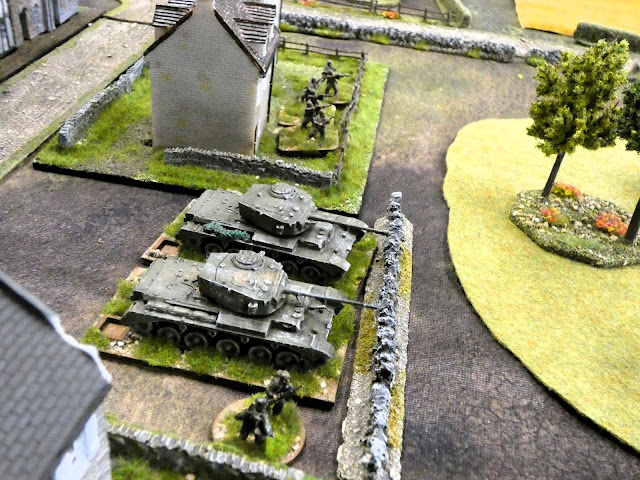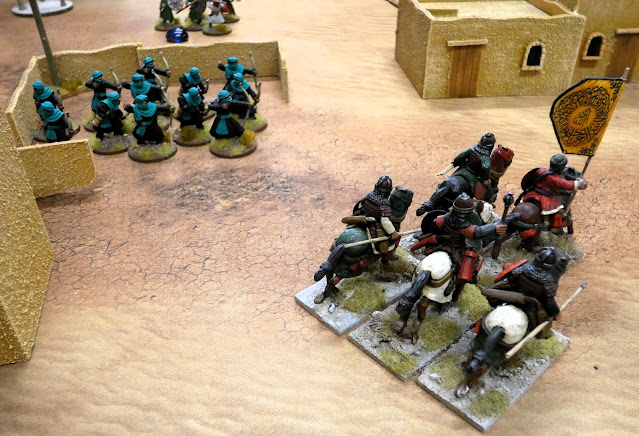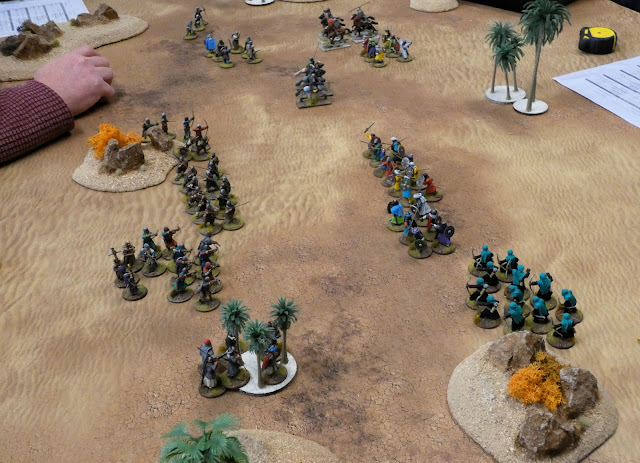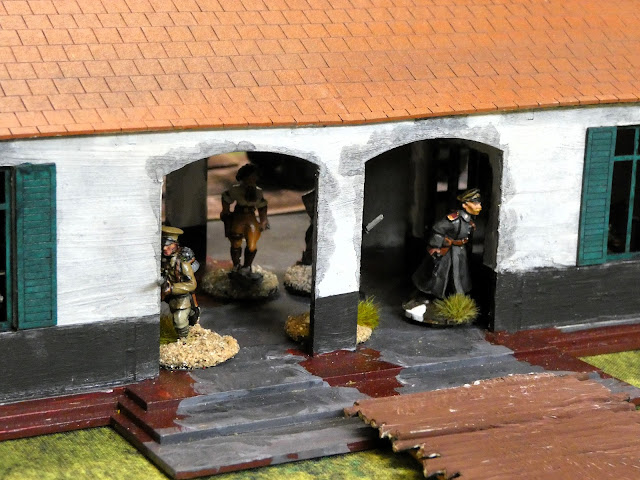The game Maurice, written by the talented game designer Sam Mustafa, is a bit of a favourite among a few of us at club who have enjoyed the wonderful level of 'friction' this game generates through its combination of card play and die rolls that can combine to produce those moments when best laid plans can come unstuck and the commander on the spot has to come up with another plan to deal with the situation as it is rather than the one he wanted - just like the real thing!
 |
| View from the American lines with Continental infantry ready to march in support of the forward line of militia and guns. |
 |
| The British in march columns and guns limbered with American militia and guns on the wooded hill to their front and riflemen out on the American left flank in the little wood |
 |
| Grenadiers, Guards and Light Infantry support the 'Hatmen' to their left. I foolishly left another three of these units off table in reserve - 'Oh dear, how sad, never mind!' |
This scenario is a classic to play with Maurice, bringing in that time pressure for the attackers and causing all sorts of challenges to overcome in that the usual pauses in an attack where the time is taken to redress the ranks and replenish a hand of cards burnt up simply manoeuvring forward and dealing with skirmishers thrown forward as the proverbial 'speed bump' is not a luxury to be had.
Thus when the red-coat columns arrived before the militia hill-top line, having driven off a unit of riflemen in woods on their right flank but having incurred fatigue casualties on the way, the two forward battalions were compelled to charge into the American line through necessity to get on with it in the forlorn hope, as it turned out, of getting a quick win, with the Continentals already on the march in their support.
 |
| Steady! - Hold your fire until you can see the whites of their eyes. Someone get some fresh round-shot for those guns. |
A not unusual British tactic, but one that cost them dear in Pyrrhic victories, commanding the battlefield but only at the high cost in casualties.
The result was what I predicted with some success seeing the riflemen obliterated by the Hatmen volley fire and with them in the open with no cover giving me a bonus of two points knocked off the American morale from a poor die roll for the Americans of a '6' as they rolled for their Army Morale response.
 |
| Yankee Doodle Dandy on the march |
 |
| 'Why us Sarje? - Because we're ere laddie' |
 |
| The British press their attack |
That is where Maurice really captures the pressure of command that some other games don't quite match, giving the player commander a range of demands on his command capability to do things or not as the situation demands whilst adding the flavour of disposing of cards to enable activations that have on them additional event characteristics that would be very nice to keep in hand for when a certain situation inevitably arises.
 |
| The American riflemen are driven off, not without a few casualties if the fatigue dice are an indicator. |
Thank you to Steve M for reacquainting us with his AWI 15mm collection and to Vince, having returned to club after picking up some bargains at the Exeter Legionary Show Bring and Buy for donning his militia colonel's blue coat and commanding the rebels.
God Save the King.
JJ


































































